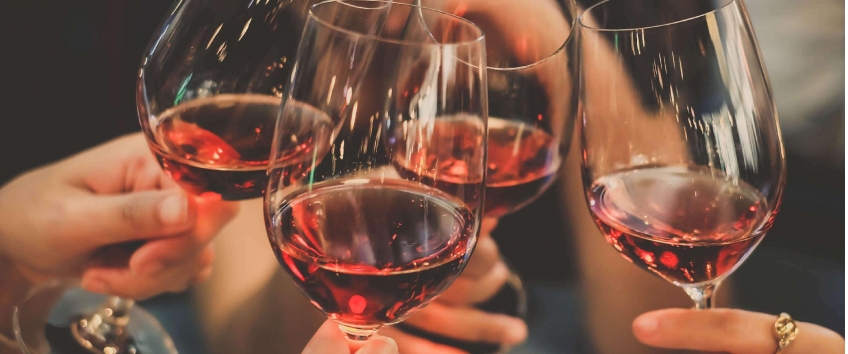In the words of Fernando Pessoa, Portuguese Poet: “Life is good, but wine is better”! This magnificent drink always provides, around a table, the liveliest conversations. But, in order to taste the wines well, some special care must be considered. After all, knowing how to appreciate a wine is an art… In this article, we invite you to board on our Cruises in the Douro with a Visit and to browse the tasty world of Wine Tasting!
Have you thought about your summer vacation? Why not take a weekend off for a stunning tour of the Douro? We suggest the sublime Porto-Régua-Porto Cruise (with Visit) or the charming Porto-Pinhão-Porto cruise, which also includes a visit. In these programs, in addition to the experience of sailing in the peaceful waters of the Douro River, you will also enjoy a wonderful Visit to a Winery or Wine Estate in the heart of the Douro Region, with Wine Tasting included.
If you prefer to stay in Porto, visit the famous Wine Cellars of Vila Nova de Gaia and do an exquisite wine tasting on our Douro Bridges Cruise with Fado show.
To taste a wine is to enjoy it all the way through. We suggest some basic rules regarding wine tasting, so that you can maximize the pleasure that can be taken from this precious nectar.
A WINE TO EXPLORE THE FIVE SENSES!
The right choice of a wine and knowing how to drink it correctly is of decisive importance in the success of a wine tasting. First, when we are willing to drink a good wine it is important not to be in a hurry. The best tribute that we can pay to this remarkable product is to enjoy it calmly. In fact, no one appreciates a work of art if they run past it!
Another aspect to consider is that wine is appreciated using all the senses and not just the taste! That is why a distinction is made between “sensory proof” and “analytical proof” (made through laboratory analysis). For this reason, winemakers also refer to wines in the following order: sight, smell and taste, using terms such as "appearance", "nose" and "mouth".
SIGHT
In a clear glass, preferably suitable for tasting, look at the wine against a white surface (for example, the tablecloth or a sheet of white paper) either from the side or from the top. You should appreciate the wine, its tone and intensity and its limpidity.
Tilt the glass. The wine will now become more translucent. This is one of the reasons why you should put a small amount of liquid in the glass, a fifth or a quarter of its total capacity. You can now appreciate the differences in shade between the edges and the center of the wine surface. All these details reveal the quality and profile of the wine. It is easily understood that as more knowledge is explored in this area, the more interesting and enjoyable it will become.
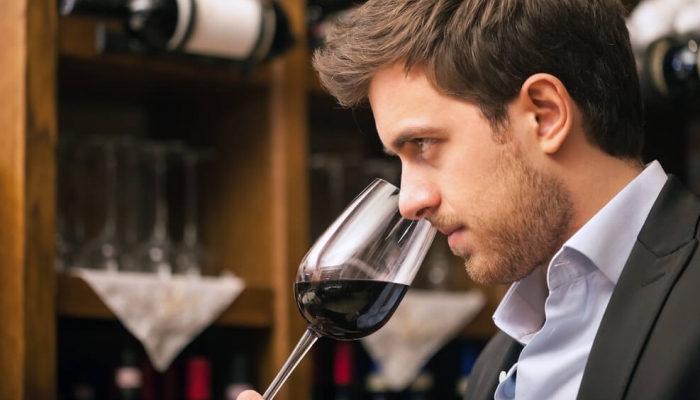 Making a Toast, a small ritual that goes beyond any culture and always means happiness
Making a Toast, a small ritual that goes beyond any culture and always means happiness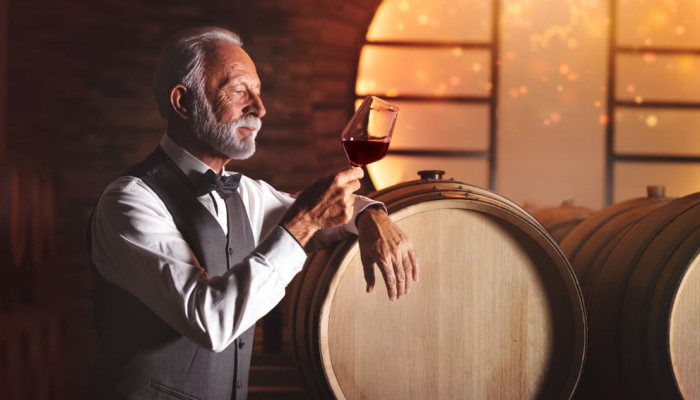 A successful wine tasting must always include a journey through the 5 senses!
A successful wine tasting must always include a journey through the 5 senses!SMELL
Another reason why a small amount is poured into the tasting glass is related to this stage of the tasting. After smelling the wine without shaking the glass, it must be rotated so that the liquid runs through the walls of the glass, thus causing the release of aromas that may differ from those you smelled the first time. Using the olfactory memory try to identify the aromas that the wine releases, both before and after swirling the wine by the glass. There are aromas that remind us of fruit (for example raspberry, lemon, dried fruit ...), toasty aroma (coffee, toasts ...), wood, spices and so on. As a rule, the more intense a wine's aroma is, the better its quality.
TOUCH
When we think about this in wine tasting, the first reaction is strangeness: Touch!? We forget that we can feel with our whole body and, in this case, with the tongue and mouth, being able to detect the texture of the tannins and the body of the wine.
TASTE
This is the most important stage of the tasting. It is important to remember that the taste buds are dispersed over several points of the tongue and behind the mouth (in the oropharynx and at the top of the exophages). Thus, while sweet flavors are captured at the tip of the tongue, bitter ones are captured at the back. The acids and salts are captured elsewhere on the tongue. For this reason, after ingesting a small amount of wine, you should make it run all over the inside of your mouth before swallowing or spitting it out. You can then concentrate on the wine's body, acidity, sweetness (or, on the contrary, dryness), bitterness and astringency (when the tongue and gums are rough). To taste a wine, you should drink just a small sip, and you can drink it a second time after a short break.
At the end of the tasting you´ll have the final taste in your mouth. This taste can stay there for a longer or shorter time. When it stays for a short time, the wine is not of good quality.
A TOAST TO THE GODS
We have already talked about sight, smell, touch and taste. But what about hearing? They say that in order to fully appreciate a wine, we must use our five senses.
This is where we explain why we always make a toast with wine! There are many stories about the origin of this remote tradition, some based on historical facts, others on mythology.
The oldest records indicate that the history of toasting before drinking wine began with the Greeks and Romans who, in ancient times, raised their wine glasses as an offering to the gods. Other reports show that making a toast originated for another reason: making a toast would seal the end of conflicts and was a test of confidence. Back then, murdering enemies by putting poison in the drinks was quite common. During the peace agreement banquets, the leaders or hosts would beat their glasses strongly against those of their opponents, causing the liquids to pass from one glass to the other and thus guaranteeing the guests that the wine was not poisoned. Hence the expression “Health” that would always be said when making a toast!
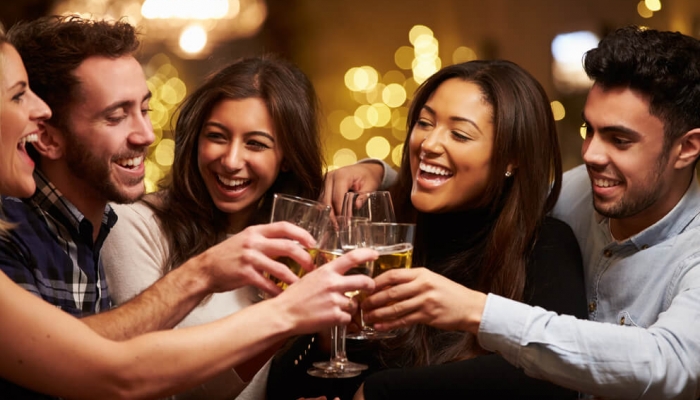 Follow the basic rules of a wine tasting and enjoy it in an unique way!
Follow the basic rules of a wine tasting and enjoy it in an unique way!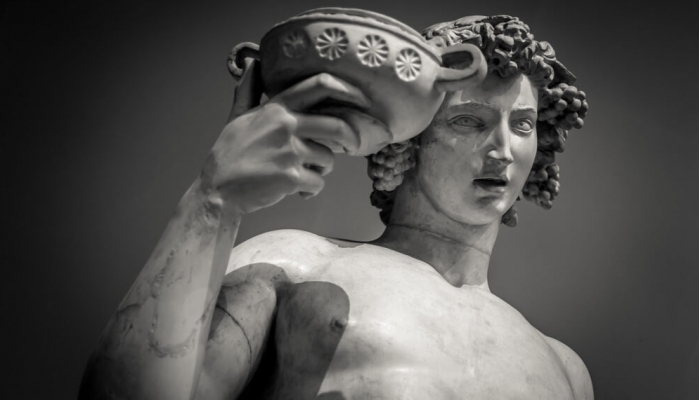 God Dionysus, the wine god in Greek Mythology
God Dionysus, the wine god in Greek MythologyThere are also those who say - in a more poetic version - that making a toast is related to a party that Dionysus, the Greek god of wine, once organized on Mount Olympus. At this party, all the guests enjoyed the pleasures of wine - through sight, smell, taste and touch - but the hearing sense was missing for the pleasure to feel complete. So, Dionysus suggested that you hit the glasses, creating a melody for wine lovers. By suggesting the tapping of glasses, the God of Wine made the hearing sense also begin to take place in the pleasure of drinking, making the sensory experience of the tasting complete.
Therefore, there are several versions that explain the origin of making a toast when drinking wine. These and other narratives are told first-hand by our experts! Book the Experiences through Douro program, visit one of the most famous Wineries in the Region, taste the fantastic wines produced there and delight yourself with the stories and curiosities related to the famous nectar.
Whether to celebrate victories, greet the gods, celebrate achievements or celebrate special moments, the truth is that a toast always means joy and good vibes.
Toast with us on board our Cruises with Visit to Wineries. Lift your cup and… Cheers! Tchin Tchin!

